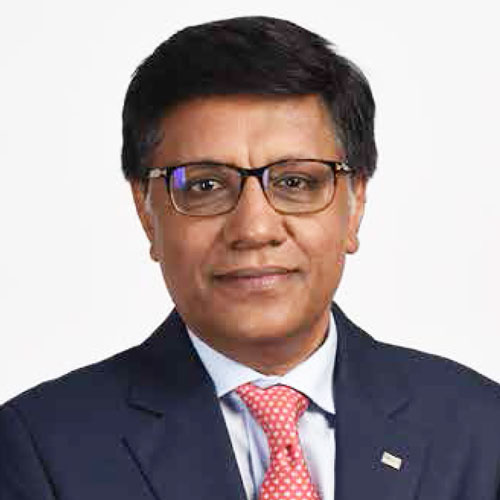Mr. Deepak Agrawal
Senior Executive Vice President, Fund Management Debt
Kotak Mahindra Asset Management Company Limited
Mr. Deepak Agrawal is a Post Graduate in Commerce from Mumbai University, a qualified chartered account and a company secretary. Also cleared AIMR CFA Level I. His career has started from Kotak AMC when he joined the organisation in December 2002, where he was initially in Research, Dealing and then moved into Fund Management from November 2006.
Q1. India's 10-year benchmark government bond yield logged its biggest jump in six months in October. What are the factors that you think are affecting these yields right now?
Ans: Rise in US yield was the major driver for rise in domestic bond yield apart from higher inflation for the month of September 2024. The US yield were higher by ~ 65-70 bps in the month of Oct 2024. This was driver partially by strong jobs data for the month of Sept 2024 and partially due to market discounting Trump Presidency and Grand Old Party (GOP) clean sweep.
Q2. October saw the inclusion of Indian government bonds in the FTSE Emerging Markets Government Bond Index. Will this attract substantial foreign investment, boosting demand for Indian bonds?
Ans: After inclusion in JP Morgan Index and Bloomberg Emerging Market Bond Index, inclusion in FTSE Emerging Bond Index is also a positive sign. It increases the probability of Indian Bonds getting included in Bloomberg Aggregate Bond Index over the course of next 2 year, which can draw in substantial flow in Indian Fixed Income Market. Inclusion in FTSE Emerging Market Bond index will draw 4 Billion $ flows in Indian Fixed Income Market starting Sept 2025. Even though the quantum is relatively smaller as comparison to JP Morgan Bond Index, nonetheless it’s a positive development for the Indian Fixed Income Market.
Q3. India's fiscal deficit for April-September stood at ₹4.75 trillion, 29.4% of the estimate for 2024-25. What could be the possible reasons?
Ans: The government's spending has been lower due to general elections conducted earlier this year. Total government expenditure during the period was 21.1 trillion rupees, or about 44% of the annual goal. For the first six months, the government's capital expenditure, or spending on building physical infrastructure, was 4.15 trillion rupees, or 37% of the annual target, as against 4.9 trillion rupees for the same period a year earlier. GOI is likely to miss the budgeted capital expenditure for FY 25 by ~ 1 lakh crs. Net tax receipts for the first six months of the current financial year were 12.65 trillion rupees, or 49% of the annual target, compared with 11.6 trillion rupees for the same period last year. GOI finances also got a boost from 2.11 lakh crs dividend from RBI. The fiscal deficit target for the full is likely to be lower than 4.9% budgeted, which is positive for fixed income market.
Q4. The annual inflation rate in India rose to 5.49% in September of 2024 from 3.65% in the previous month, well above market estimates of 5%. How do you anticipate this?
Ans: Inflation for the month of September rose above 5% and for the month of October it has come above 6%. However the core inflation has been in the band of 3.6-3.70%. Inflation for September and October is largely due to vegetable inflation (tomato) which has started to cool off in the month of Nov 2024. Inflation for Q3 FY 25 is likely to be above RBI forecast, however for Q4 FY 25 Inflation is likely to be in line with RBI forecast. Inflation in Q1 FY 26 is likely to be in the band of 4.25-4.5%.
Q5. With gold prices hitting record highs recently, should investors consider increasing their exposure to gold, or is it time to book profits?
Ans: We have been advising investors to have some allocation to gold based on the advice of their investment counsellor.
We continue to remain positive on gold, given that global central banks continue to buy gold (H1 CY 24, Central bank gold purchases is 5% higher than last year), Monetary easing by Fed and given the fiscal, tariff and immigration policies of the Trump Govt is likely to push inflation higher.
Q6. How can retail investors effectively incorporate bonds into their portfolios to ensure steady income and enhance diversification?
Ans: Investors should adhere to asset allocation based on the advice of their investment counsellor. Within the fixed income allocation, debt funds are likely to outperform other traditional fixed income options due to rate cuts expected over next 1 year. As an alternative to debt scheme, Investors can also consider our Kotak Income plus arbitrage fund of fund, which invest 40% of the assets in arbitrage scheme and 60% of its assets in debt scheme. This fund is tax efficient as compared to other debt scheme.




